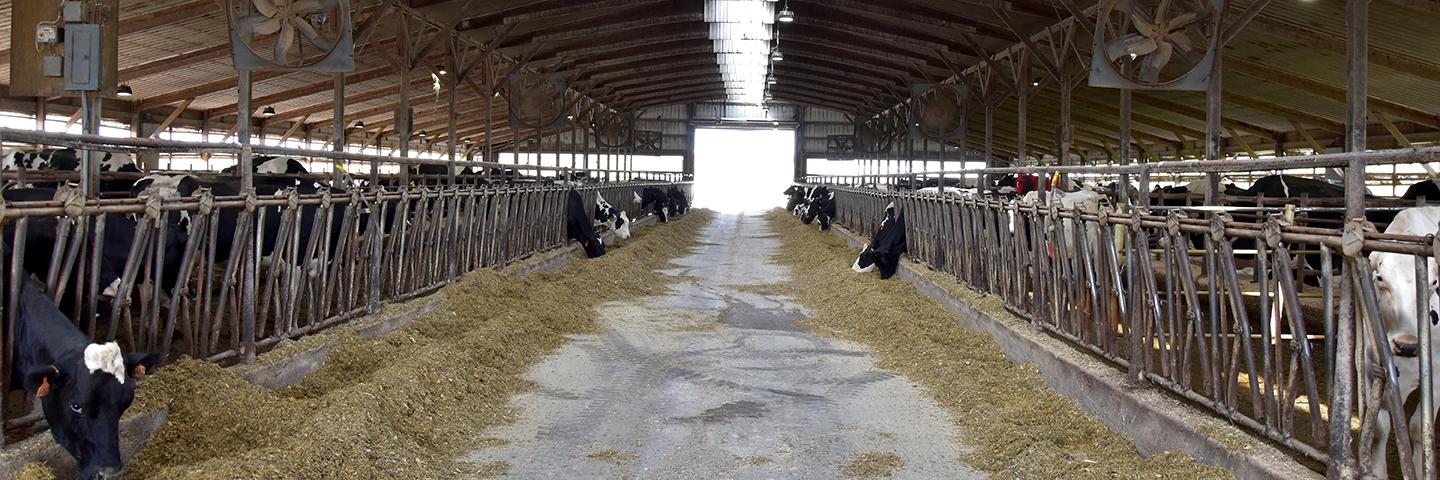NRCS Provides Conservation Solutions for Iowa Dairy Producers

NRCS can provide conservation solutions to Iowa’s dairy producers in various ways.
USDA’s Natural Resources Conservation Service (NRCS) can provide conservation solutions to Iowa’s dairy producers in various ways. From managing manure to grazing improvements to energy efficiency upgrades, NRCS offers conservation planning and financial assistance to implement practices that protect natural resources on your farm.
Jon Hubbert, state conservationist for NRCS in Iowa, says protecting natural resources on your land starts with a plan, and grows from there. “Our staff of conservationists are willing to assist with many aspects of your operation,” he said. “We can put together a conservation plan for you to help you achieve your long-term conservation and production goals.”
Farm Bill Programs
Once a conservation plan is in place, NRCS provides financial assistance programs to offset the cost to install and maintain conservation practices. One of the oldest and most well-known programs is the Environmental Quality Incentives Program (EQIP). Through EQIP, NRCS provides agricultural producers with financial resources and one-on-one help to plan and implement conservation practices. Using these practices can improve your agricultural operations and lead to cleaner water and air, healthy soils, and better wildlife habitat. Last year, NRCS obligated about $33 million through EQIP to implement conservation practices on Iowa agricultural lands.
Another popular Farm Bill conservation program is the Conservation Stewardship Program (CSP). Through CSP, Iowa NRCS helps farmers maintain and improve their existing conservation systems and adopt additional conservation activities to address priority resource concerns. CSP pays for conservation performance – the higher the performance, the higher the payment. The 389 CSP contracts selected for funding in Iowa last year total about $19.7 million for Iowa farmers over the next five years, helping to treat resource concerns on 186,681 acres.
CSP contract holders boost their conservation activities through “enhancements.” Working one-on-one with their NRCS conservation planner, CSP applicants select enhancements that best fit their management goals and that will address resource concerns on their operation.
Conservation Practices
Examples of conservation practices Iowa dairy producers can adopt in Iowa through EQIP or CSP:
- Comprehensive Nutrient Management Plan (CNMP): Depending on the type of animal feeding operation, a CNMP may be required to document activities on a livestock operation. The CNMP evaluates existing environmental risks and provides proposals to reduce the risk of negative impacts on the environment.
- Nutrient Management: Nutrient management is the actual management of the manure and other nutrient sources after developing a CNMP.
- Manure Storage: Storing waste to protect downstream water courses from manure runoff by storing manure until conditions are appropriate for field application. This could include basins, tanks, pits beneath a confinement facility, or a sheltered concrete slab area. These practices can also cut fertilizer costs and reduce nutrient losses.
- Prescribed Grazing/Watering Systems: NRCS can help dairy producers with grazing animals develop a rotational grazing system to help manage forages. Within the grazing plan, NRCS can design watering facilities to allow livestock daily water accesses. Easily accessible water keeps livestock healthier and helps reduce soil compaction and erosion and keeps pastures in better shape.
- Energy Audit/Farmstead Energy Improvement: NRCS can help with a farmstead energy audit to discover ways to help dairy producers save money and energy. This can include energy upgrades to lighting systems, pumps for milking equipment, refrigeration plate coolers, compressor heat recovery systems, and variable speed drive motors used to run milking equipment.
- Filter Strips: A strip of grass, trees or shrubs that filters sediment and manure runoff and removes contaminants before they reach water bodies or water sources, such as wells.
- Conservation Crop Rotations: Incorporating small grains into the cropping system for additional silage or grazing.
- Cover Crops: Planting crops such as cereal rye, oats, and winter wheat to temporarily protect the soil from wind and water erosion and supply living roots to the soil during times when cropland is often not adequately protected. Cover crops usually have adequate time to grow in the fall after corn silage. Cover crops are also used often by dairy producers for nutrient uptake after manure pits are emptied and for spring forage.
NRCS has 100 field offices throughout Iowa, located at USDA Service Centers. Iowa NRCS shares office space with the Iowa Department of Agriculture and Land Stewardship-Division of Soil Conservation and Water Quality (IDALS-DSCWQ) and local Soil and Water Conservation Districts (SWCD).
To locate and contact your local NRCS office, visit www.farmers.gov/working-with-us/service-center-locator.


